Alpine Tip by Andy Collin
I’m not talking about the easiest way down from the top of the lift, but another kind of cat track. While I would love to take credit for this tip, I learned it from Rick Lyons. When I shared the magic with Tyler Barnes, he said he thought he remembered passing this disappearing act along to Rick. I’m sure that they would both agree that this great nugget of tribal knowledge belongs to us all. This little trick won’t make you a better skier but it can make your day on the mountain a bit more comfortable, will allow you to get a bit more mileage out of those expensive ski boots and potentially keep you safer when walking on slippery surfaces.
Keeping one’s gear in good working order is of paramount importance and making certain your boots are in “class A” condition should be high on everyone’s list. “Cat Tracks” and / or “YakTrax” (available in your most current accessories catalog from PSIA), a wonderfully clever and ridiculously simple accessory, are more important than most of the stuff we cram into our pockets or packs while on snow. Keeping your boot bottoms flat and appropriately thick will insure safe and secure binding contact and assist in one’s ability to stand on a flat ski – two critically important aspects of what we do as skiers.
The benefits of boot bottom protection are undeniable and when skiing at Timberline in the summer, protecting this surface can be as valuable as a dependable edge. Walking to and from the chair lift will destroy your boots in short order. Winter skiers who gear up in the parking lot or who spend time on harsh surfaces like concrete and even carpeted surfaces in the lodge should also make this comparably small investment. Spending $12-$17 Cat Tracks / $15 YakTrax will, without question, add life to your boots and aid in keeping precision in your turns.
But what the heck do you do with these things while skiing? And then when you are ready to use them the twisted rubbery mass threatens to dump everything else in one’s pockets out onto the snow when it’s time to walk the grit and concrete. Three simple steps, that should be stated on the packaging (but are not), allow you to discretely carry and store these devices hassle free. You won’t even know that you have them with you.
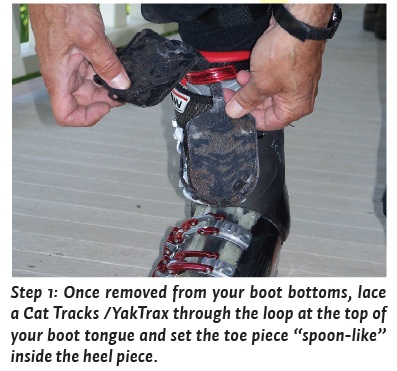
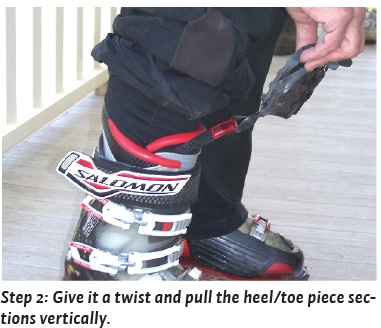
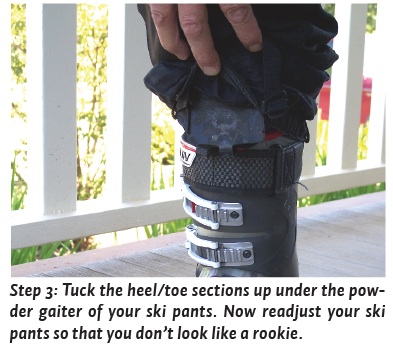
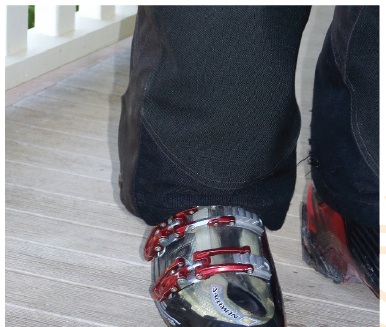
This is such a cool tip you can easily share it with your lesson clients too! You’re welcome! And make sure, when you next see Rick or Tyler that you give them some credit for this little gem, too.
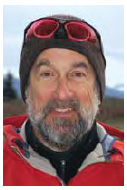 Andy Collin is a Training Director for Timberline Lodge Ski and Snowboard School, is PSIA Alpine Level III certified and teaches at both Timberline and Mt. Hood Meadows Ski Resort on Mt. Hood, Oregon. Email him at acollin@aol.com
Andy Collin is a Training Director for Timberline Lodge Ski and Snowboard School, is PSIA Alpine Level III certified and teaches at both Timberline and Mt. Hood Meadows Ski Resort on Mt. Hood, Oregon. Email him at acollin@aol.com
